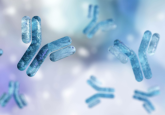Panel discussion Q&A follow-up: ADC bioanalytics

Thank you to everyone who attended our panel discussion on ADC bioanalytics. Below are our panelists’ responses to the questions posed during the live event. We hope this is a useful resource and thank our attendees and our speakers, Ashley Brant, Rachel Foreman, Violet Lee, Charlie Britten and Benno Ingelse, for their insights.

Ashley Brant
Vice President, Bioanalytical Services
ICON
Ashley Brant is a seasoned leader in the bioanalytical industry with over 25 years of experience in driving process improvements that enhance productivity and ensure regulatory compliance across both large and small molecule bioanalytical streams.
Ashley’s career began after earning her biochemistry degree from Eastern Michigan University, performing EGFR receptor research with Elizabeth Butch. She then joined Parke-Davis/Warner-Lambert. There, she assessed molecular biological interactions to evaluate the mechanisms of action and safety risks for early drug candidates. This role led her into the biomarker quantitation field and to mastering LC–MS/MS, integrating it with traditional ligand-binding assay (LBA) methods.
At Pfizer (NY, USA), Ashley expanded her expertise in regulated bioanalysis, developing methods specializing in ligand binding, antibody capture, endogenous molecules, and hybrid platforms, all while adapting to the evolving fast throughput demands of drug development.
She later pursued graduate education at the University of Michigan (MI, USA) in the Hakansson lab and transitioned to consulting, honing her skills further in bioanalysis. Over the past 15 years, Ashley has led bioanalytical teams within contract research organizations, overseeing diverse areas such as mass spectrometry, LBAs, cell-based assays, flow cytometry, immunogenicity and more.

Rachel Foreman
Senior Scientist, Drug Discovery Bioanalysis Group
AstraZeneca (Cambridge, UK)
Rachel is a Senior Scientist in the Discovery Bioanalysis Group at AstraZeneca, specializing in targeted LC–MS/MS assays for early drug compounds and biomarker measurement. She works in collaboration with numerous teams to support the growing in vitro platform for safety assessments of novel oncology treatments.
Before this role, Rachel completed her PhD in Clinical Biochemistry at the University of Cambridge (UK), where she developed bioanalytical methods to identify and quantitate novel peptide biomarkers for metabolism. It was during this research that Rachel learned the importance of optimizing methods to improve assay detection limits and the potential benefits of using in vitro models for understanding diseases and therapeutic treatment.

Charlie Britten
Senior Director, Bioanalytical Sciences
ADC Therapeutics (ADCT; Lausanne, Switzerland)
Charlie Britten has worked on the bioanalysis of ADCs at ADCT for the past 11 years, including developing the bioanalysis package for Zynlonta. Charlie now leads the Bioanalytical Sciences group at ADCT, covering clinical and non-clinical PK, immunogenicity and biomarkers, as well as product characterization, bioassay development and early phase screening assays.
Charlie spent the last 15 years working on analysis of biologics, spending 4 years at Merck KGaA (NJ, USA) on CMC bioassays and clinical/non-clinical bioanalysis prior to joining ADCT. He has an MSc in Medical Biochemistry from the University of Wales and a BSc in Biomedical Sciences from Cardiff University (both UK).

Benno Ingelse
Senior Director, Bioanalytics & DMPK
Byondis (Nijmegen, Netherlands)
Benno Ingelse is a seasoned bioanalytical scientist with 25 years of experience in both the pharmaceutical industry and contract research organizations. He has led teams of scientists at various companies, driving innovation and ensuring the highest standards of bioanalytical research. Over the past 6 years at Byondis, Benno has focused extensively on all bioanalytical aspects of ADCs, including LC–MS/MS, LBAs and immunogenicity. In his role, Benno is responsible for the bioanalytical support of ADC projects in all different phases of drug development, from early discovery up to clinical trials.

Violet Lee
Senior Principal Scientist
Genentech (CA, USA)
Dr M. Violet Lee is a Senior Principal Scientist at Genentech, specializing in bioanlaytical chemistry with expertise in protein/ large molecule, small molecule and post translational modification characterization, quantitation and immunogenicity risk assessment. Violet obtained her M.S in Chemistry from the University of Illinois at Urbana-Champaign (IL, USA) and went on to obtain her PhD in Chemistry from the University of Wisconsin-Madison (WI, USA). In 2013, Violet joined the Bioanalytical Sciences Department in Genentech, supporting projects ranging from late-stage research through clinical development of antibody-drug conjugates (ADCs) and novel large molecule modalities in oncology and ophthalmology. Violet’s group develops and implements immunoaffinity mass spectrometry-based PK assays, characterizes ADC ADME and quantifies associated catabolites, as well as assesses potential immunogenicity of biotherapeutics through MHC-II Peptide Proteomics. Violet has served as a member of the organizing committee and Chair of the discovery bioanalysis session for applied pharmaceutical analysis, was a member of the AAPS (VI, USA) ADC Bioanalysis Committee sub-team, and chaired the ‘Therapeutic Proteins, Antibodies, and ADCs’ session at The American Society for Mass Spectrometry (NM, USA).
In a free payload assay, should we test at both ADC low and ADC high (Cmax) concentrations for FT (freeze/thaw), ST (short-term) and LTS (long-term) stability tests? Or just at one concentration of ADC?
Benno: We would test at multiple concentrations in case we would fear that specs would not be met at the highest ADC concentration (assuming you are looking at ADC stability and impact on free payload levels upon long-term storage).
Charlie: Our approach is to test this as part of development, and we would initially just use Cmax. Should instability be observed, we would then look to change the method or sample handling to mitigate this. If this is not possible, then testing multiple concentrations to understand the impact would be needed, as indicated by Benno.
For an ADC that uses maleimide linkage, which poses a risk to albumin transfer, is this something that you would consider monitoring and if so, how?
Benno: Yes, we have an albumin-linker drug assay for our more mature programs. The requirement for this assay is to have an anti-payload antibody. Measuring albumin-linker drug is also a very sensitive way to assess plasma stability (so looking at the formation of albumin-linker drug rather than looking at deconjugation).
Which new mass spectrometry machine did you buy to get more sensitivity?
Rachel: We transferred our payload assays from a SCIEX 6500 to 7500 and were able to reduce LLOQ up to 4-fold.
To what extent is it better to evaluate in vivo DAR (drug-to-antibody ratio), apart from DAR established during the CMC phase?
Ashley: In your early phase, it is good to understand your DAR to best characterize your expected PK and similar… which is different from your DAR in CMC work… one is purely theoretical, but the other has the impacts of the biological system. Both provide different aspects of information, though.
For a non-classical ADC drug, for example, a payload-non-cleavable Linker with Fc fragment, should the assays of free payload, TAb (total antibody) and ADC still be considered to be established for PK filing?
Benno: We would gather as much information as we can in early studies and then, together with DMPK and clinical scientists, we can decide that, based on all these data, in certain cases payload analysis may not be needed anymore in Phase III studies.
Ashley: It depends on how you deliver the payload and if the payload is ever fully separated… Otherwise, I would consider this to be an antibody therapeutic and the ADC would be considered the PK… TAb could also be evaluated if linker cleavage needs to be assessed. This would need a reasonable plan delivered and discussed with your FDA reviewer to ensure all aspects of therapeutic delivery and interaction are addressed from an efficacy and safety risk perspective.
In which situation does naked antibody interference need to be evaluated for ADC and TAb assays?
Ashley: I think it would depend on your specificity to the ADC or TAb assay. Also, if your drug could re-bind to your antibody or there is a risk of other interactions if it is a highly specialized antibody. In most cases with good specificity, this would be a lower concern.
Rachel: Interferences from antibody should only impact the TAb assay and may be worth assessing during validation, especially if the sample matrix is known to have high levels of antibody proteins (i.e., fortified cell culture media).
Charlie: This probably depends to some degree on which assay format you are using. For ligand binding assays, we always check that the conjugated and unconjugated antibodies are detected similarly in the TAb assay at the start of development, as Rachel indicates, this is the most likely assay to observe an impact. Some assays may have more of an impact than others, for example, a generic preclinical method using anti-human antibodies would more likely be impacted than an assay using anti-IDs. Similarly, we would typically demonstrate that the unconjugated antibody is not detected in the ADC assay as part of method development. In addition, we would check that the different DAR species are detected in a comparable way in both the TAb and ADC assay, as this could influence the determination of half-life, particularly for stochastic ADCs conjugated via the native cysteines.
DNA and RNA aptamers are still considered monoclonal antibody alternatives (binders). Do you believe they truly have a future in clinical applications, or are they ultimately more suited for academic publications and proof-of-concept studies?
Ashley: I believe there are huge clinical applications for DNA and RNA aptamers. I think they have potential as a therapeutic standalone as well as a carrier for a payload. Aptamers can also be used as an analytical tool for the testing/diagnostic arena as well. Aptamers can be produced potentially more reliably than monoclonal antibodies and provide higher specificity and reliability. I think we are still in the early adoption phase, but this technology has a lot of possibilities.
What about VHHs, aka Nanobodies?
Ashley: Again, there are clinical applications that exist, though ongoing production and commercial product development have been much less than the aptamers discussed above. These may have clinical relevance specific to neurology and psychology as they are able to cross the blood-brain barrier more readily due to their smaller size. We should absolutely continue to find new ways to incorporate these technologies into our assay development as well as therapeutic development.
What is your experience with tissue analyses?
Benno: We look at payload concentration in tissues (healthy versus tumor), which is what most companies do, I believe.
Rachel: Agreed, tissue and tumor analysis are vital in understanding ADC disposition and PK/PD. Depending on the required data, it can either be done by imaging (intact tissue) or quantitative LC–MS/MS (homogenate) techniques.
Regulatory guidance indicates that stability should be generated under conditions similar to study samples. For ADCs, does your company generate stability of the payload in the presence of the conjugated antibody (at the approximate Cmax)?
Benno: Yes, similar to question 1.
How do we conduct domain specificity for ADA assessment? Is a confirmatory cut point for domain specificity using a specific domain necessary?
Charlie: We do this by generating molecules that share only part of their structure with the ADC and use these in the confirmation part of the ADA assay, for example, confirming with BSA-Payload or unconjugated antibody. There is a paper from Hoofring et. al. (2013), which provides some information on how this can be done. I would suggest that the cut point for each molecule be assessed.
The opinions expressed in this Q&A are those of the speakers and do not necessarily reflect the views of Bioanalysis Zone or Taylor & Francis Group.
The feature was produced in association with:






